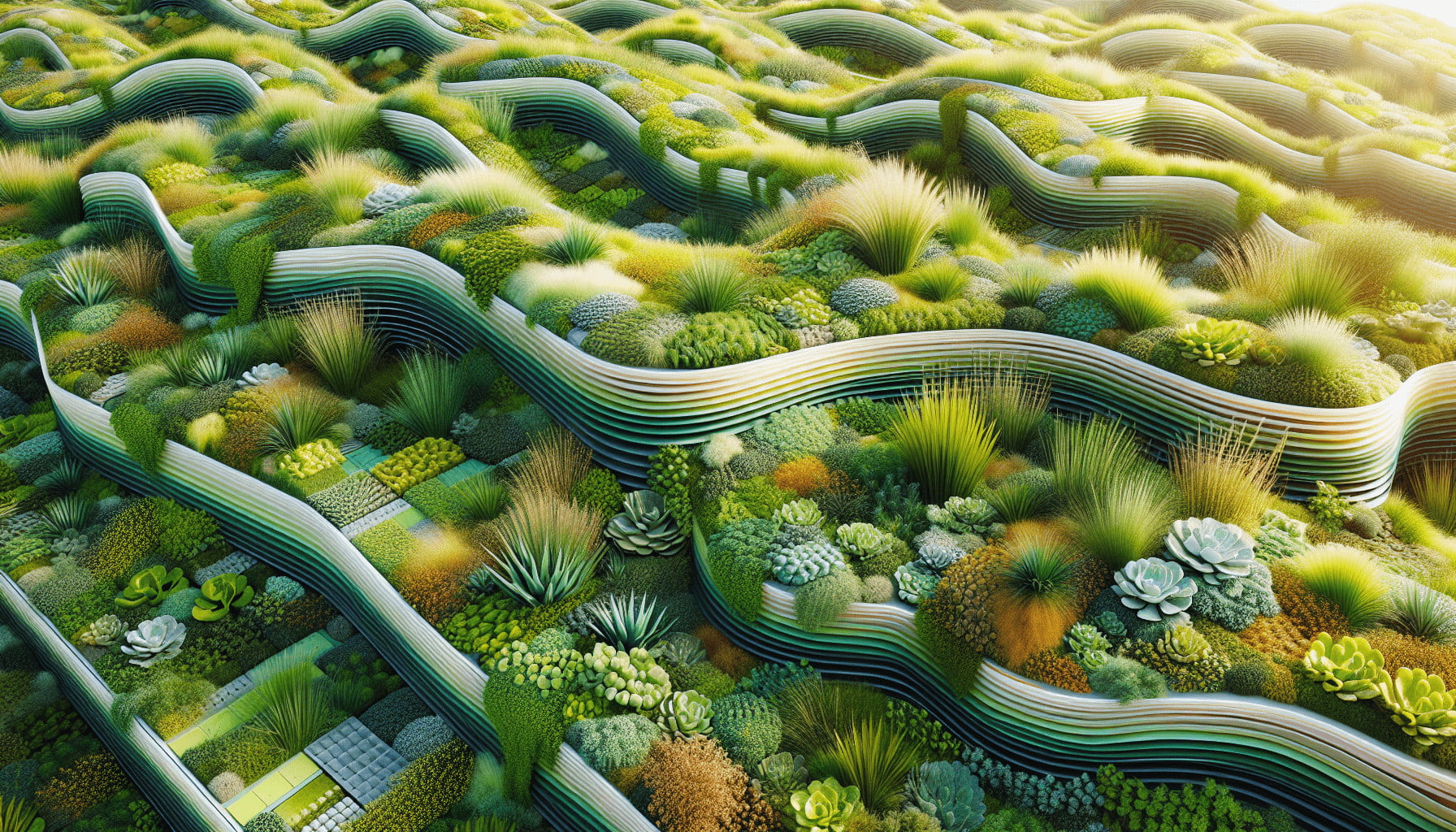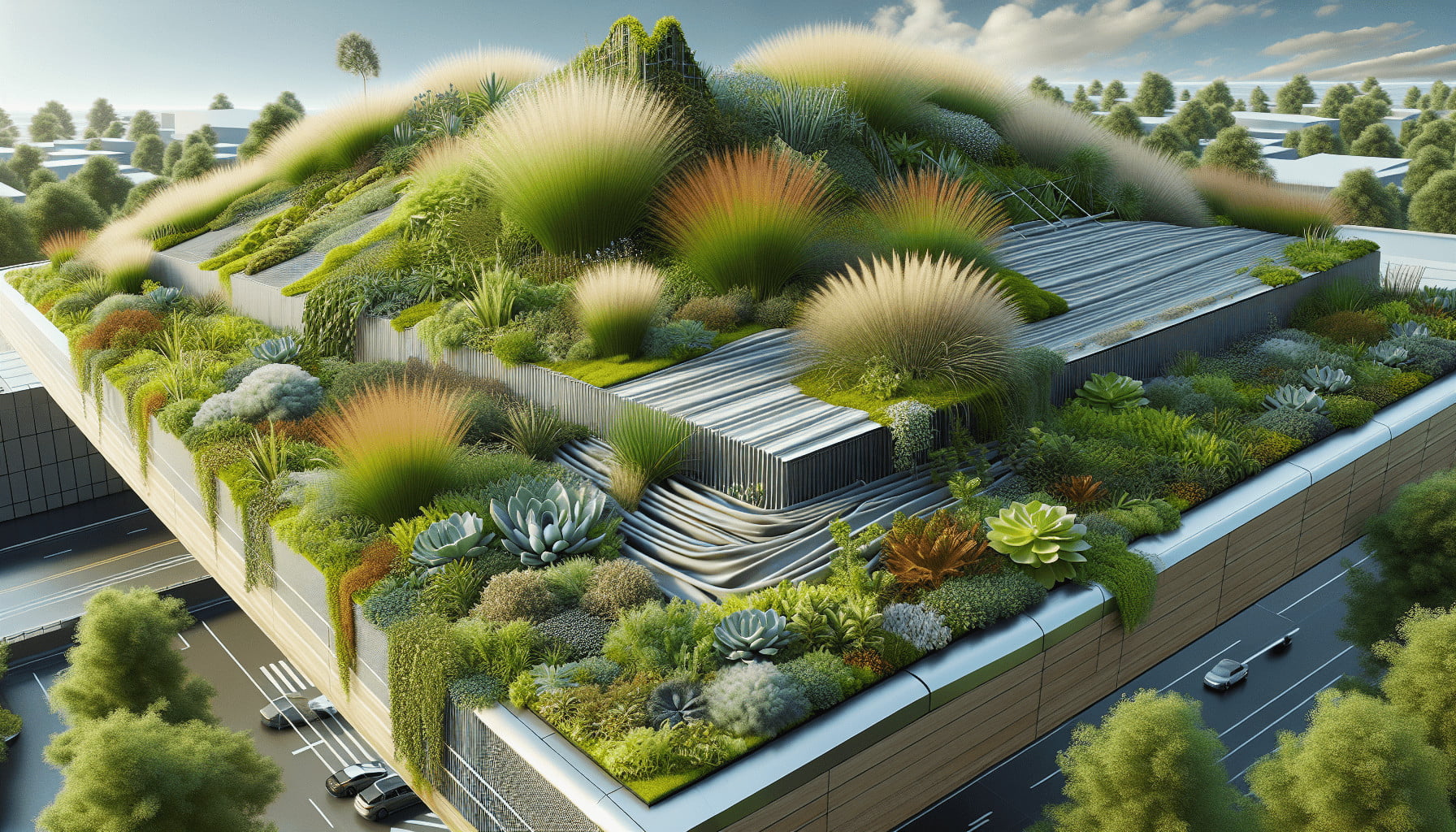So, you’re considering a green roof and want to know which roofing membranes are best for your eco-friendly project. In “Top Roofing Membrane Options for Green Roof Installation,” you’ll discover a comprehensive guide on the most reliable and efficient materials available today. Whether you’re prioritizing durability, water resistance, or sustainability, this article covers it all to help you make an informed decision. Get ready to transform your roof into a green, thriving oasis!
Top Roofing Membrane Options For Green Roof Installation
Are you considering installing a green roof and wondering about the best roofing membrane options? Look no further! Choosing the right roofing membrane is crucial for the success and longevity of your green roof. Not only does it support plant growth, but it also protects your structure from potential water damage. Let’s dive into the top roofing membrane options and explore their benefits in depth.

Understanding Roofing Membranes for Green Roofs
Before we jump into specific membrane options, it’s essential to understand what a roofing membrane does for a green roof. A roofing membrane acts as a barrier to prevent water from seeping into the building, while also providing essential support to the green roof structure. The right choice depends on several factors, including durability, flexibility, and compatibility with your greening plans.
Importance of Roofing Membranes
Roofing membranes are the unsung heroes of green roofs. They play a critical role in both waterproofing and supporting the different layers of soil and vegetation. Their effectiveness ensures that water is safely managed and channeled away from the building structure.
Basic Components of a Green Roof System
A green roof system typically consists of:
- Vegetation Layer: This is where plants grow.
- Growing Medium: A specially designed soil or substrate.
- Filter Layer: Prevents soil erosion.
- Drainage Layer: Facilitates water flow.
- Protection Layer: Shields against root penetration.
- Roofing Membrane: The waterproof barrier we’ve been discussing.
Top Roofing Membrane Options
Let’s take a closer look at the top roofing membrane options for green roofs. Each material has its unique advantages, so it’s important to find the one that best meets your specific requirements.
1. EPDM (Ethylene Propylene Diene Monomer)
EPDM is a popular choice due to its exceptional durability and flexibility. It’s a synthetic rubber roofing membrane that has been used in commercial roofing for decades.
Benefits of EPDM
- Durability: EPDM has a lifespan of 20-30 years, making it a cost-effective long-term choice.
- Flexibility: It can withstand extreme temperatures and remains flexible even in cold climates.
- Eco-Friendly: EPDM is recyclable and has a lower environmental impact compared to other synthetic materials.
Installation Considerations
EPDM comes in large sheets, which reduces the number of seams and potential leak points. However, it requires professional installation to ensure proper sealing and adhesion.
2. PVC (Polyvinyl Chloride)
PVC membranes are known for their strength and resistance to various elements. This thermoplastic material is highly valued for its robustness and reflective properties.
Benefits of PVC
- Chemical Resistance: PVC is resistant to many chemicals, making it an excellent choice for urban and industrial areas.
- Reflectivity: Its reflective surface helps reduce heat absorption, contributing to energy efficiency.
- Tensile Strength: PVC can handle significant load-bearing, ideal for extensive green roofs.
Installation Considerations
PVC is welded at the seams using hot air, creating a strong and watertight seal. It might be more expensive initially but offers savings on energy costs in the long run.
3. TPO (Thermoplastic Polyolefin)
TPO membranes are a newer choice in the green roof industry. They combine some of the best qualities of EPDM and PVC membranes.
Benefits of TPO
- Energy Efficiency: TPO has high reflectivity, which can reduce cooling costs.
- Immune to Algae Growth: Its composition prevents algae and fungal growth, ideal for green roofs.
- Eco-Friendly: TPO is made from recycled materials and is 100% recyclable.
Installation Considerations
TPO’s installation process is similar to PVC, using hot-air welding for seams. It offers a balance between cost and performance, which makes it a compelling option.
4. Modified Bitumen
Modified Bitumen membranes are an evolution of traditional asphalt roofing materials, enhanced for better performance.
Benefits of Modified Bitumen
- Durability: Extremely strong and can withstand harsh weather conditions.
- Multiple Layers: These can be reinforced with materials like fiberglass for added strength.
- Self-Adhesive Options: Some variants come with self-adhesive installations, simplifying the process.
Installation Considerations
While modified bitumen can be applied in various ways (torch-applied, self-adhesive, etc.), professional installation is recommended to guarantee durability and effectiveness.
5. Green Roof Specific Membranes
Some products are specifically designed for green roof applications, incorporating all necessary properties like root resistance, flexibility, and waterproofing in one membrane.
Benefits of Green Roof Specific Membranes
- Tailored Designs: These membranes are created with green roofs in mind, ensuring compatibility.
- Root Resistance: Built-in protection against root penetration.
- Ease of Installation: Often designed to be simpler to install compared to non-specific membranes.
Installation Considerations
Given their specialized nature, these membranes might come at a premium. However, their design often facilitates easier installation and fewer complications.
Comparing Roofing Membrane Options
To help you make a decision, here’s a quick comparison of the key characteristics among the top options:
| Membrane Type | Durability | Flexibility | Eco-Friendliness | Cost | Installation Complexity |
|---|---|---|---|---|---|
| EPDM | 20-30 years | High | High | Moderate | Professional |
| PVC | 15-25 years | Moderate | Moderate | High | Professional |
| TPO | 15-20 years | High | High | Moderate | Professional |
| Modified Bitumen | 10-20 years | Moderate | Low | Low – Moderate | Professional |
| Green Roof Specific | 15-30 years | High | Moderate – High | High | Professional |
Factors to Consider When Choosing a Roofing Membrane
Selecting the right membrane involves more than just knowing the options. There are several factors to consider to make sure the chosen material aligns with your specific needs.
Climatic Conditions
The weather in your region plays a significant role. For instance, EPDM’s flexibility in cold climates makes it a good choice for colder regions, while PVC’s reflective properties are beneficial in hotter climates.
Building Structure
Not all roofing membranes are compatible with every building structure. You need to assess the load-bearing capacity and design features of your building to make an informed choice.
Local Building Codes
Always check local regulations and building codes. Some areas might have restrictions on certain materials or specific requirements for green roofs.
Budget
While it’s tempting to choose the least expensive option, consider long-term benefits and potential cost savings. Investing in a higher-quality membrane could lead to fewer repairs and lower energy costs over the lifespan of the roof.
Environmental Impact
If sustainability is a priority, you’d want to opt for eco-friendly options. Membranes like TPO and EPDM are known for their lower environmental impact and recyclability.
Maintenance Requirements
Some membranes require more maintenance than others. Green roof specific membranes might come with warranties or built-in properties that simplify upkeep, offering peace of mind.

Installation Process Overview
Understanding the basics of the installation process can help you make better decisions and communicate effectively with professionals.
Pre-Installation Steps
- Inspection: Assess the current roof condition.
- Cleaning: Remove debris and old roofing material.
- Repair: Fix any structural issues or weak spots.
Installation Steps
- Laying the Membrane: The membrane is unrolled and roughly positioned.
- Sealing Seams: Using appropriate methods like hot-air welding or adhesives.
- Securing Edges: Edges are secured to prevent uplift or water ingress.
- Adding Layers: Protective layers are added, followed by the drainage and vegetation layers.
Post-Installation Checks
Conduct a thorough inspection to ensure proper installation, addressing any potential weak points that could lead to leaks or structural issues.
Maintenance Tips for Longevity
A well-maintained green roof can last for decades. Here’s how you can ensure your green roof remains in peak condition.
Regular Inspections
Periodically check for any signs of wear, tear, or leaks. Early detection can save you from costly repairs.
Clean Debris
Remove leaves, branches, and other debris that could clog drainage systems or damage the membrane.
Check Vegetation
Ensure plants are healthy and that roots are not compromising the roofing membrane. Regular gardening can prevent these issues.
Professional Maintenance
Consider periodic professional maintenance to conduct thorough checks and address any issues that might not be visible to the untrained eye.
Conclusion
By now, you should have a solid understanding of the top roofing membrane options available for green roofs. Each option comes with its unique advantages and considerations, and the best choice will depend on your specific needs, budget, and environmental goals. Remember to thoroughly evaluate your options, consider all relevant factors, and when in doubt, consult a professional to ensure the longevity and success of your green roof installation. Happy roofing!
